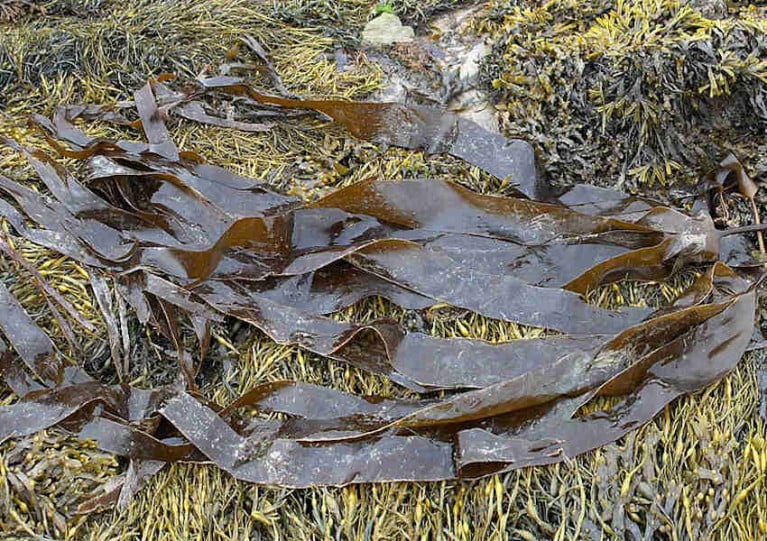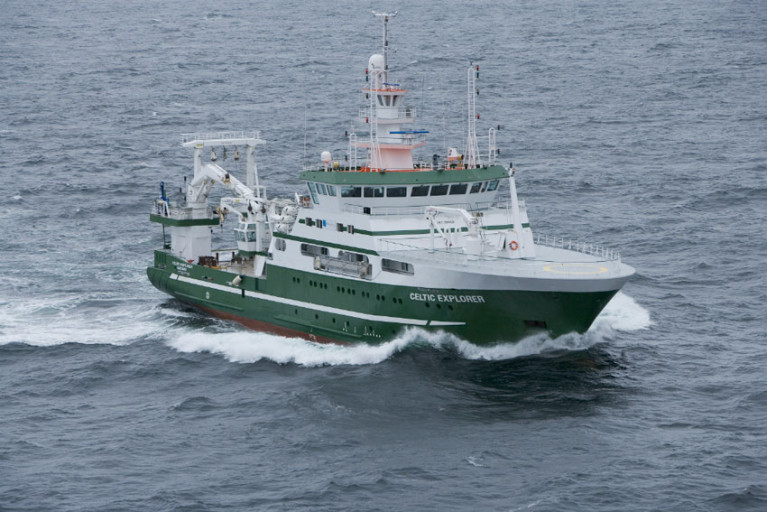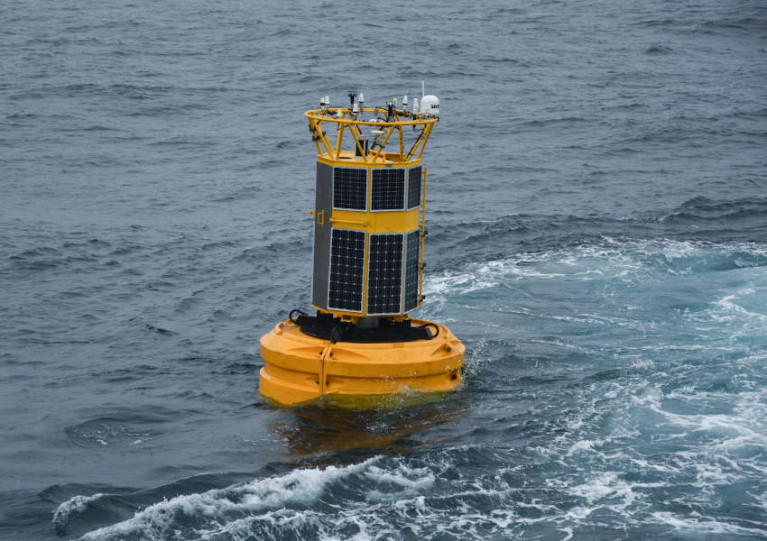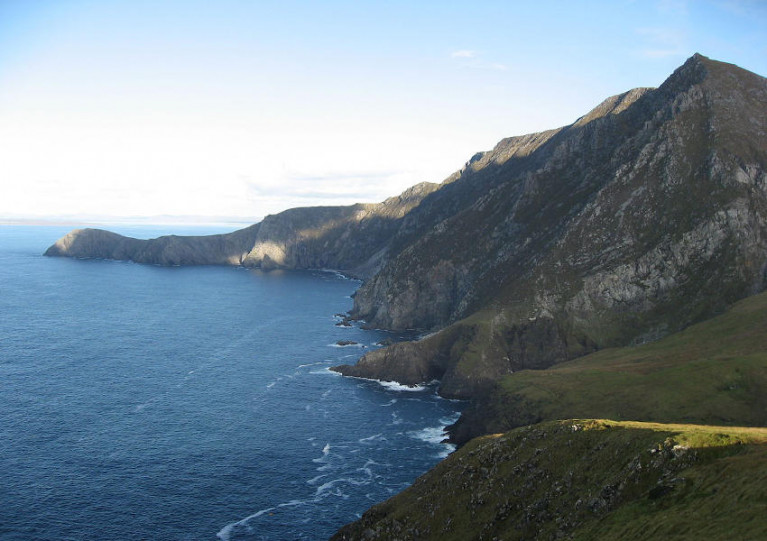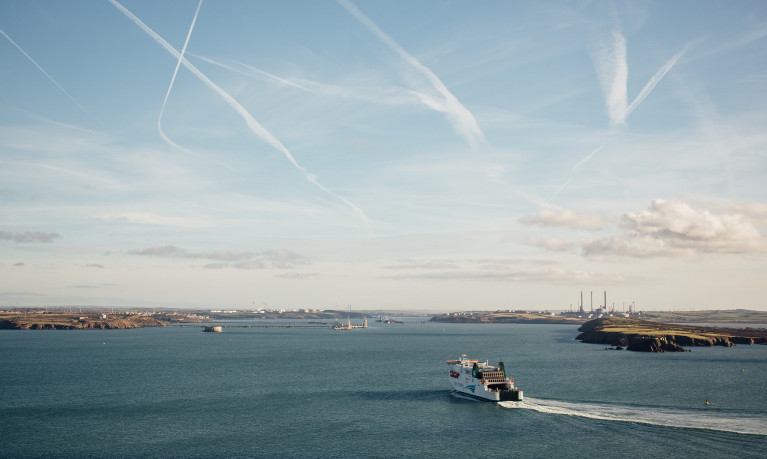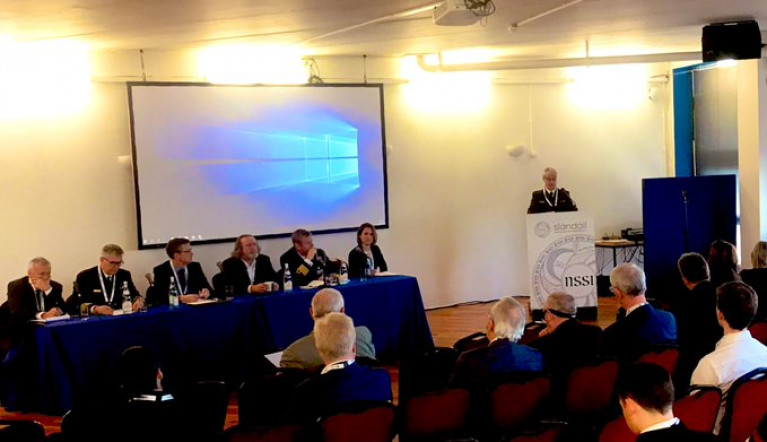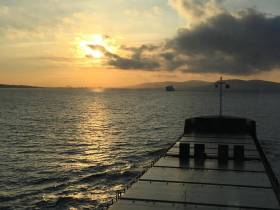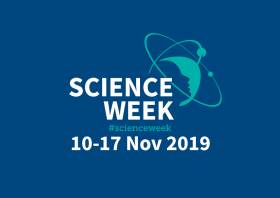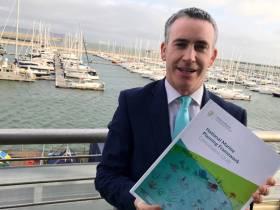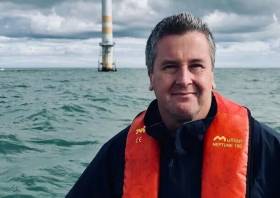Displaying items by tag: Climate Change
‘Ice Age’ Kelp Off Ireland Could Be Key To Learning How Marine Plants Survive Climate Change
Kelp found on the coast of Ireland may have survived some 16,000 years since the last ice age, scientists have discovered — and it could be crucial to understanding how marine plants deal with climate change long-term.
According to AOL News, the team from universities in Scotland, France and Portugal studied the genetic composition of a type of kelp known as oarweed from 14 sites in the North Atlantic and found three distinct clusters — one along North America’s Eastern Seaboard, one off Ireland and Scotland, and another around Brittany.
“As the ice sheets retreated from northern European shorelines at the end of the most recent ice age, oarweed distribution followed and recolonised the higher latitudes of the Atlantic,” said marine ecologist Dr Andrew Watt from Heriot-Watt University.
As a result, the oarweed found in Ireland and Scotland today, many millennia later, is “more closely related to populations in the high Arctic than to the Brittany cluster”.
Despite their unique characteristics, it’s hoped the genetic similarity between the three clusters can help marine science experts learn how plant life can bridge such extremes of climate change.
AOL News has more on the story HERE.
Surface ocean carbon dioxide observations collected by the Marine Institute’s RV Celtic Explorer have been published in the 2020 version of the Surface Ocean Carbon Atlas (SOCAT).
These data provide scientists, climate researchers and international policy makers with essential information on ocean carbon dioxide measurements.
About 36 billion tonnes of carbon dioxide are added to the atmosphere each year as a result of human activities. The ocean absorbs about one-quarter of these emissions, which helps to slow down climate change by removing CO2 from the atmosphere.
However, absorbing additional CO2 increases the acidity of seawater. This process is known as ocean acidification, and it could have dramatic consequences for marine life.
The impacts of ocean acidification would extend up the food chain, threatening food security for millions of people
If sea water is too acidic, it can make it difficult for marine organisms such as coral, oysters and mussels to form shells and skeletons.
Ocean acidification may impact some plankton species, which form the base of marine food webs and would impact larger animals like fish and whales.
The impacts of ocean acidification would extend up the food chain, affecting fisheries and aquaculture, threatening food security for millions of people, as well as the tourism industry.
Ocean acidification is a global problem. The European Union has committed to cut its greenhouse gas emissions by at least 40% below 1990 levels by 2030 and aims to be climate-neutral — an economy with net-zero greenhouse gas emissions — by 2050.
To understand the Earth’s changing climate, it is essential to collect high-quality data on surface ocean CO2 levels.
Since 2017, the Marine institute has been measuring dissolved carbon dioxide (pCO2) in Irish and Atlantic surface waters using a General Oceanics pCO2 system on board the RV Celtic Explorer. This system enables near-continuous and high-accuracy carbon dioxide measurements in surface water and the atmosphere when the vessel is at sea.
The close collaboration between the Marine Institute and P&O Maritime Services, with support from GEOMAR in Germany, has resulted in the successful collection of this data.
SOCAT has become a milestone in research co-ordination, data access, climate research and in informing policy
The high-quality measurements of CO2 collected by the Marine Institute are now included in the 2020 version of the Surface Ocean Carbon Atlas (SOCAT) and fill “a notable data gap”, according to the Irish State agency for marine research.
The Marine Institute submitted data from nine surveys in 2017 and a further 15 surveys in 2018 to SOCAT, whose data set os used globally by climate researchers and contribute to the work of the Intergovernmental Panel on Climate Change (IPCC).
SOCAT has become a milestone in research co-ordination, data access, climate research and in informing policy, the Marine Institute says.
And this work further contributes to collaborative research on ocean carbon and acidification undertaken over the last decade by the institute and NUI Galway.
Margot Cronin, chemist at the Marine Institute, said: “Measuring carbon dioxide in Irish and Atlantic waters provides essential data that increases the understanding of our oceans and climate.
“The Marine Institute is contributing to global science, providing advanced scientific knowledge which will help inform policy and our response to a changing ocean.”
As previously reported on Afloat.ie, the Marine Institute’s latest Oceans of Learning series focuses on our changing ocean climate with videos, interactive activities and downloadable resources.
How we monitor, analyse and understand the changes in our ocean climate is vital in providing the basis for effective policies to address a range of issues and challenges — such as changing ecosystems, food security, rising sea levels and extreme weather events.
This ocean climate work is the focus of this week’s Oceans of Learning series, with resources from the Marine Institute and Met Éireann, the Irish meteorological service.
“Our ocean is fundamental to life on earth and affects so many facets of our everyday activities,” says Marine Institute chief executive Dr Paul Connolly. “One of the greatest challenges we face as a society is that of our changing climate.
“The strong international collaborations that the Marine Institute has built up over decades facilitates a shared focusing on our changing ocean climate and developing new and enhanced ways of monitoring it and tracking changes over time.
"Our knowledge and services help us to observe these patterns of change and identify the steps to safeguard our marine ecosystems for future generations."
The Marine Institute's annual ocean climate research survey, which has been running since 2004, facilitates long-term monitoring of the deep water environment to the West of Ireland.
This repeat survey, which takes place on board the RV Celtic Explorer, enables scientists to establish baseline oceanic conditions in Irish waters that can be used as a benchmark for future changes.
Scientists collect data on temperature, salinity, water currents, oxygen and carbon dioxide in the Atlantic Ocean. This high quality oceanographic data contributes to the Atlantic Ocean Observing System.
Physical oceanographic data from the survey is submitted to the International Council for the Exploration of the Seas (ICES) and, in addition, the survey contributes to national research such as the VOCAB ocean acidification and biogeochemistry project, the ‘Clean Atlantic’ project on marine litter and the A4 marine climate change project.
During the 2019 survey, the RV Celtic Explorer deployed a replacement M6 weather buoy as part of the Irish Marine Data Buoy Observation Network (IMDBON).
The buoys have instruments which collect weather and ocean data including wind speed and direction, pressure, air and sea surface temperature and wave statistics.
This data provides vital information for weather forecasts, shipping bulletins, gale and swell warnings as well as data for general public information and research.
“It is only in the last 20 years that meteorologists and climatologists have really began to understood the pivotal role the ocean plays in determining our climate and weather,” said Evelyn Cusack, head of forecasting at Met Éireann.
“The real-time information provided by the Irish data buoy network is particularly important for our mariners and rescue services.”
Oceans of Learning offers downloadable resources such as videos, fact sheets and interactive activities on Ireland’s climate monitoring projects. To access the resources for this week’s series, visit A Changing Ocean Climate.
For more information on Oceans of Learning, visit www.marine.ie and follow the Marine Institute on Facebook, Instagram and Twitter.
The Marine Institute has announced a call for proposals for a Senior Post-Doctoral Fellowship in Ocean Ecosystems and Climate for a duration of five years.
This fellowship is designed to provide the link between current climate change research, on international and national scales, with the need to provide operational advice and support to stakeholders.
Proposals are invited from suitable research supervisors at higher education institutions in the Republic of Ireland. Further details including the application procedure are available in the guidelines for applicants.
All applications must be submitted through the Marine Institute’s online grant management system (RIMS). Further details for the fellowship are available in the proposal outline document.
The closing date for this call is 4pm Irish time on Wednesday 1 August. Further enquiries should be addressed to the Research Funding Office at [email protected]
In south Wales's Pembrokeshire region, a £60 million marine energy project that will help tackle climate change while reviving the local economy in the wake of Covid-19 has been given the green light.
The UK Government and Welsh Government have now approved the business case for the Pembroke Dock Marine project, which is expected to generate £73.5 million a year to the Swansea Bay City Region’s economy.
Pembroke Dock Marine is led by the private sector, with support from Pembrokeshire County Council. The project is expected to generate more than 1,800 jobs in the next 15 years.
The project is made up of four elements:
• The Marine Energy Test Area within the Milford Haven Waterway led by Marine Energy Wales, enabling technology developers to test their marine energy devices close to their base of operation
• The largest facility of its kind in the world, a 90 square kilometre Pembrokeshire Demonstration Zone delivered by Wave Hub Limited that will enable the deployment of future energy generating technologies, including floating wind
• Marine Energy Engineering Centre of Excellence - a technology, innovation and research centre delivered by the Offshore Renewable Energy (ORE) Catapult
• Redevelopment of land at Pembroke Dock, led by the Port of Milford Haven (see latest), to deliver the infrastructure needed by the industry as it continues to mature
For much more on this major development click here
While across the sea at Rosslare Europort which is served by Irish Ferries from Pembroke Dock, Afloat reported last month a Dutch company which is to establish an offshore wind supply base at the Co. Wexford ferryport.
Defence Forces Chief Says Gender Gap is Causing Wars
According to Gazette.ie, Chief of staff of the Defence Forces, Vice Admiral Mark Mellett told the Slandáil National Security Conference on Wednesday that climate change is driving tension and insecurity but this cannot be separated from other themes such as bio-diversity loss, over-exploitation and pollution.
'Most invasive species is human beings'
“In the context of eco-system governance, perhaps the most invasive species of all is human beings,” he said.
The gender gap is one of the biggest drivers of inter-state and intra-state violence and insecurity, the Vice-Admiral said.
“And actually, one of the things we're doing in our military is investing significantly in institutionalising a gender perspective in our soldiers and our sailors and air crew,” he said.
Reducing carbon footprint
The Defence Forces chief said: “We can’t change cultures overnight but certainly, in any mission we’re involved in, we have our gender advisors…we’re trying to bring along that change in cultures that empowers women, that improves gender equality and tries to close the gender gap.”
The UN Security Council resolution on women, peace and security, 1325, is built into Defence Forces planning and strategy, he said.
“So it’s not just about bullets and the military might,” he said.
The Defence Forces is also seeking to reduce its energy footprint continually with more efficient ways to propel (naval) ships and drive vehicles.
The main carbon use driver is fuel for aircraft and ships with 40% of energy consumption driven by the naval fleet.
New acquisitions of fleet will have electric drives.
The defence forces will be taking bets on smart technology in the future, he said.
The Slandáil National Security Summit was organised to bring together uniformed individuals in the security industry with a view to creating conversations about national security, its founder Dr Gerry Waldron said at the conference which was held at the Helix in DCU, Dublin 9.
To read more from the conference, The Law Society Gazette reports here.
Residents Oppose Expansion of Oil Facility At Cloghan Point
Along the shores of Belfast Lough, people living in the area have said they cannot understand the logic for the expansion of an oil facility that would see large tankers offloading fuel several times a month.
The £20m project, reports BBC News NI, would see the redevelopment of the Cloghan Point facility near Whitehead.
The company behind it said it would create jobs and deliver cheaper fuel.
The site was built in the late 1970s to serve Ballylumford and Kilroot Power stations.
It did this for several years.
But, in more recent times, the four large tanks have been used to store part of the Republic of Ireland's strategic reserve of diesel and gas oil.
Local people said that meant it was a static site with little activity.
To read much more click here and for TV coverage (click arrow on first photo).
Marine & Climate Science On Show At Mayo & Galway Science Festivals
Marine science and ocean climate research will be showcased to mark Science Week 2019 at science and technology festivals in Castlebar this coming Sunday 17 November, and Galway next Sunday 24 November.
The Marine Institute will host an interactive stand at the Mayo Science and Technology Open Day which will include a display of corals, mermaid’s purses and live fish species.
Children can identify invertebrates under the microscope and find out more about plastic waste in our oceans. There is also an opportunity to learn more about the research undertaken at the Marine Institute’s facility in Newport, including its involvement in the Bluefin Tuna Data Collection Programme.
Elsewhere, the Galway Science and Technology Festival next weekend will focus on climate action, understanding climate change, and how science and technology can help us create a positive climate impact.
At the Marine Institute stand visitors will learn about the work undertaken by the institute to observe and understand how our ocean is changing.
An Argo float, which collects important data on the temperature and salinity of the ocean, will be on display. There will also be video displays and interactive touch screens on the institute’s involvement in marine biodiversity research.
Among other attractions, visitors will have the chance to see a mini ROV, or remotely operated vehicle, as well as models of Ireland’s marine research vessels the RV Celtic Explorer and RV Celtic Voyager, and how this infrastructure is used for fisheries and oceanographic research.
The Marine Institute stand will also host a competition to win a tour of the RV Celtic Explorer, or an Explorers Seashore Safari lesson for their primary school class.
The Mayo Science and Technology Festival will be held at GMIT Castlebar on Sunday 17 November from 11.30am to 6pm. Galway Science and Technology Festival will take place at the Bailey Allen Hall, NUI Galway on Sunday 24 November from 10am to 6pm.
For more information on activities taking place this week for Science Week 2019, click HERE.
‘Critical That We Provide Framework’ For Marine Planning Says Minister At Launch Of Draft Consultation
Sixteen different sectors and activities are within the scope of the draft National Marine Planning Framework (NMPF) launched yesterday (Tuesday 12 November).
And plans for a system of designated Strategic Marine Activity Zones among its main ambitions, as previously reported on Afloat.ie.
Commenting on the draft, Damien English, Minister of State for Housing and Urban Development, said: “Our ocean supports a diverse range of economic activities such as seafood, tourism, renewable ocean energy and a wide range of recreational opportunities.
“It contains areas with some of the most productive and diverse resources in the world. Its ecosystem and biodiversity make it an environmental and social treasure.
“As our marine and coastal areas experience more pressures from human activity it is critical that we provide a framework for what activities should and shouldn’t happen in our marine and coastal areas.”
The minister notes that a component of the draft NMPF is its policies relating to renewable energy and action on climate change.
He said: “Climate change is the defining challenge of our generation. The Government’s Climate Action Plan, published in June, highlighted the critical role of marine planning for the delivery of offshore renewable energy. This document sets out the proposed forward-planning framework within which our renewable energy targets can be met.”
The Climate Action Plan commits to increasing the level of electricity generated from renewable sources to 70%, indicatively including at least 3.5GW of offshore renewable energy.
In addition, the draft NMPF reinforces the Government’s stated commitment to move away from oil combustion within heat and transport sectors towards renewables in the coming decade.
Minister English also launched the Government’s new Marine Planning Policy Statement, which was subject to public consultation this past summer and outlines the Government’s vision for the future development of the marine planning system.
It also sets out the overarching policies and principles the Government says it expects marine planning bodies, and other public bodies that engage with the marine planning system, to observe.
Just as the NMPF will be a parallel document to the National Planning Framework, the Marine Planning Policy Statement is a parallel document to the Planning Policy Statement, which underpins the operation of Ireland’s entire land-planning system.
The minister has invited the public and all interested parties to give their views on the draft framework.
“The document we’re publishing is the culmination of two years of engagement and dialogue with the public and stakeholders and across Government,” he said.
“The very constructive engagement with the NMPF Baseline Report, published last year, has had a major influence on this document. Whether you are in the energy sector, a fisherman, want to protect our marine environment, or live in a coastal community and are concerned about your area’s future, please have your say before February 28th.
“We want the finalised plan to be national in every sense — valued, owned and supported by all. Strong public input will help achieve that.”
The National Marine Planning Framework Consultation Draft is available to read or download HERE.
Documentary Highlights Threat To Ireland’s ‘Invisible’ Marine Life
Following last night’s stark warning for Irish coastal cities and towns, RTÉ’s On Climate season of TV programmes continues tonight (Tuesday 12 November) with a look at how climate change, pollution and overfishing have directly affected biodiversity around Ireland’s coasts.
Presented by Philip Boucher Hayes, Hot Air: Ireland’s Climate Crisis includes footage off the Kerry coast that shows how much that part of the Atlantic has been reduced from an area once teeming with life to a virtual desert.
As the Irish Examiner reports, one of the main culprits is change in ocean temperature and chemical composition as waters absorb increased levels of carbon dioxide from the atmosphere.
Underwater wildlife guide and filmmaker Vinnie Hyland also explains how the “drop-off” in marine life has revealed an increase in plastic pollution that poses a growing threat to those species that remain.
He says: “The depressing part is what we are doing to the marine life and because it is underwater, it is invisible.”
Hot Air: Ireland’s Climate Crisis broadcasts tonight at 9.30pm on RTÉ One. The Irish Examiner has more on the story HERE.



























